Peter and his father John spent many hours in the 1970’s down at Bewdley on the Severn Valley Railway working on steam locomotive restoration. For 5 years their main focus was on Great Western large prairie tank loco 5164 which had been purchased from the Woodhams scrap yard in Barry, South Wales. The loco has been in storage after its boiler certificate expired and in late 2023 it was taken over by the Erlestoke Manor Fund and moved to Tyseley in Birmingham for a complete overhaul and eventual return to steam.
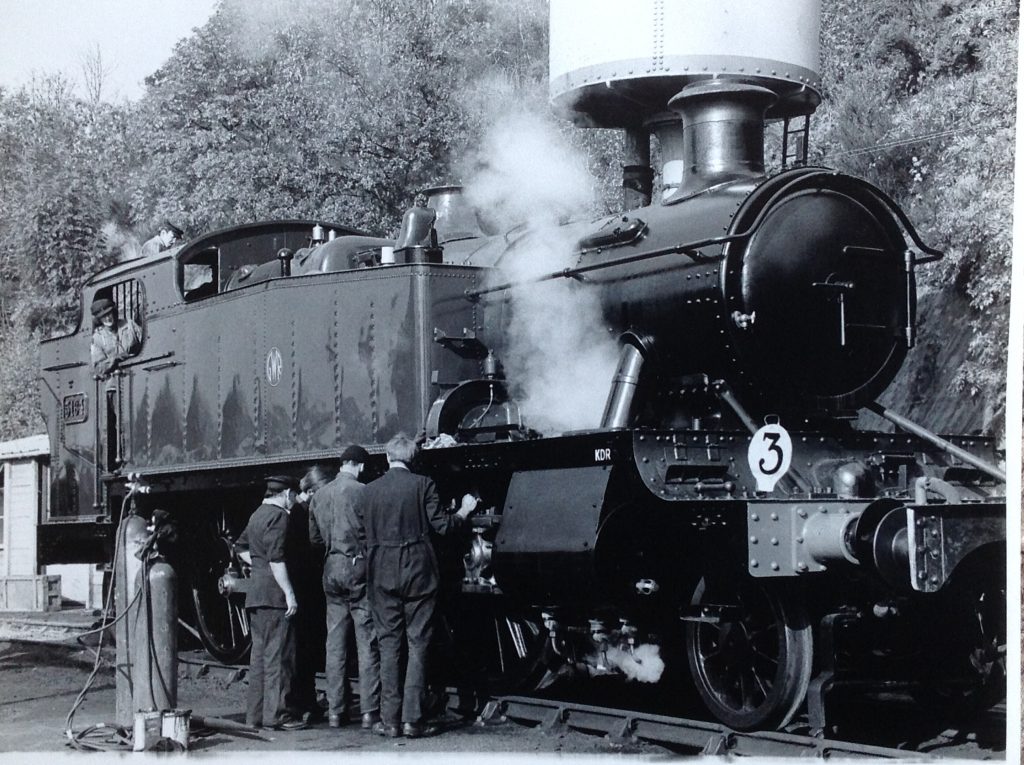
When there was little to do on 5164, they helped out with the small prairie 4566. Once 5164 was in service on the SVR they moved on to GWR Mogul (2-6-0) 9303 (also numbered 7325). John also spent some time helping with GWR 2-8-0 2857.
Coed Bach (Little Trees) is Peter’s OO Gauge model railway. Based on the fictional South Wales mining town of Coed Bach it is set in the 1930’s. The layout is 3.6m x 1.8m and has two outer loops of track for main line running and a small branch line circuit in the middle which connects to the loco shed, a mine, the goods yard and wagon sidings. Up to three locos can run continuously and shunting can be done in the mine, wagon sidings and engine shed without interfering with the main tracks. AnyRail software was used to design the layout.
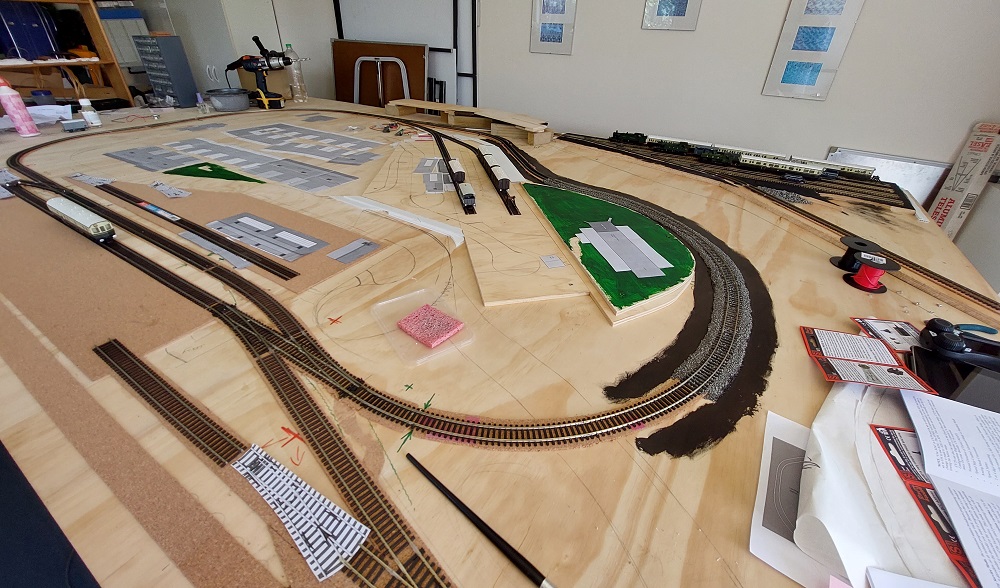
For more photos of the layout as it developed go HERE.
The Locos
5164
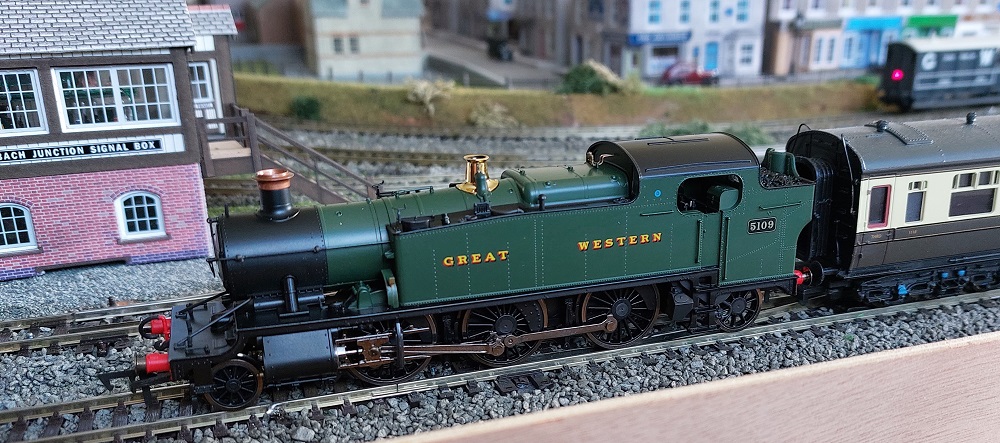
A Dapol Great Western Large Prairie loco, soon to be renumbered to match the one Peter and John worked on.
6129
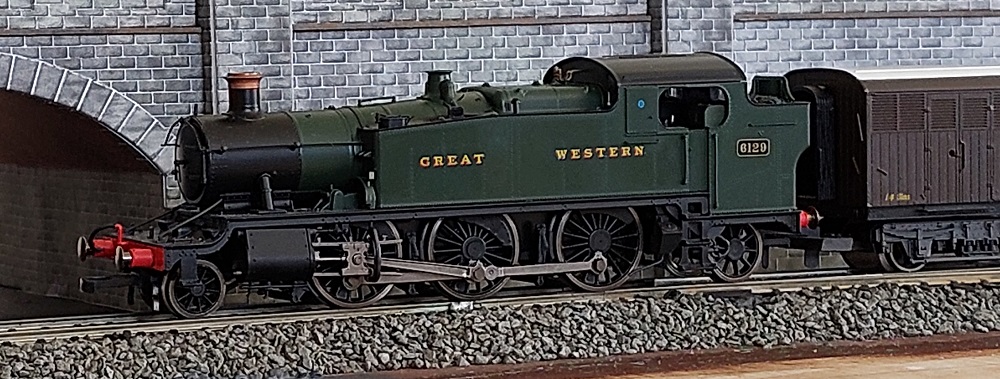
A Dapol Great Western Large Prairie loco, this is a later version of the one Peter and John worked on.
4566
Originally numbered 4550 this small prairie has been renumbered with brass numberplates to 4566.
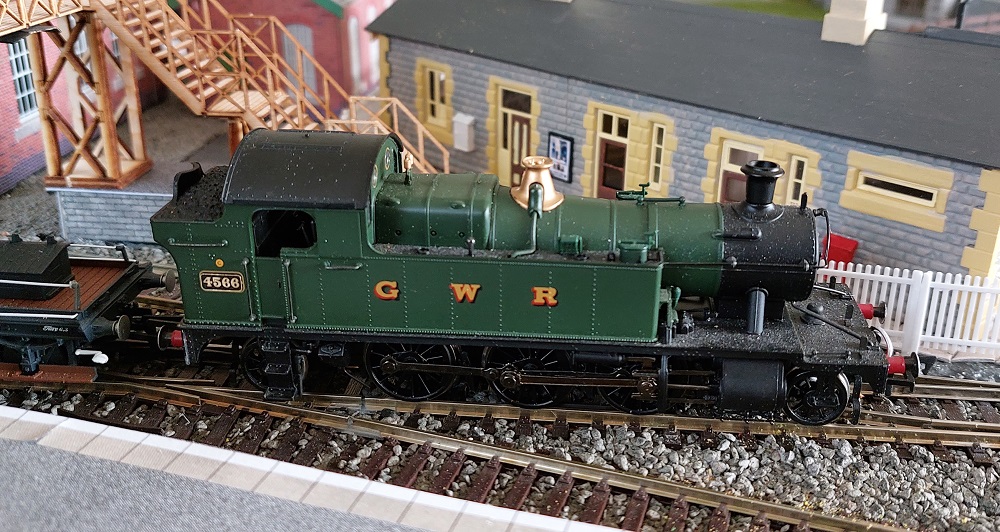
2857
A Hornby 28xx class loco. Originally numbered 2807, this 2-8-0 heavy freight loco has been renumbered with brass numberplates to 2857,
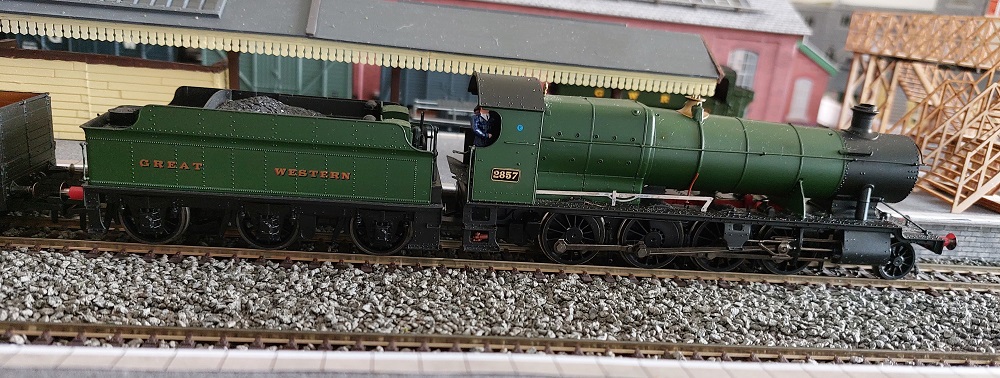
1010
A Hornby ‘County’ class loco.

1029
A Hornby ‘County’ class loco.
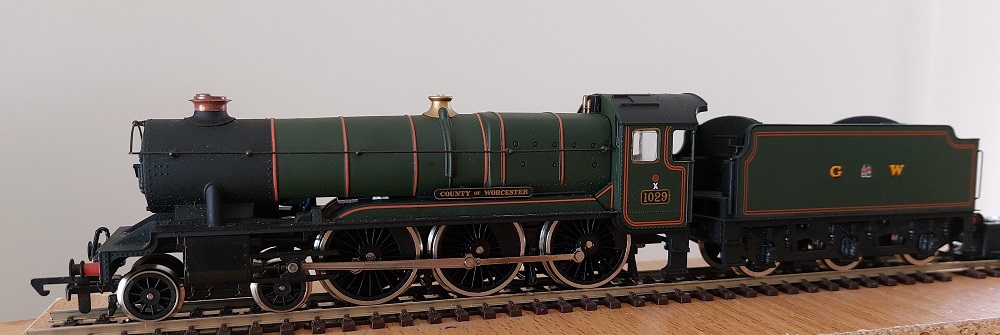
3835
A Hornby ‘County’ class loco dating back to the pre-grouping age (before 1923 when the Big Four railway companies were formed).
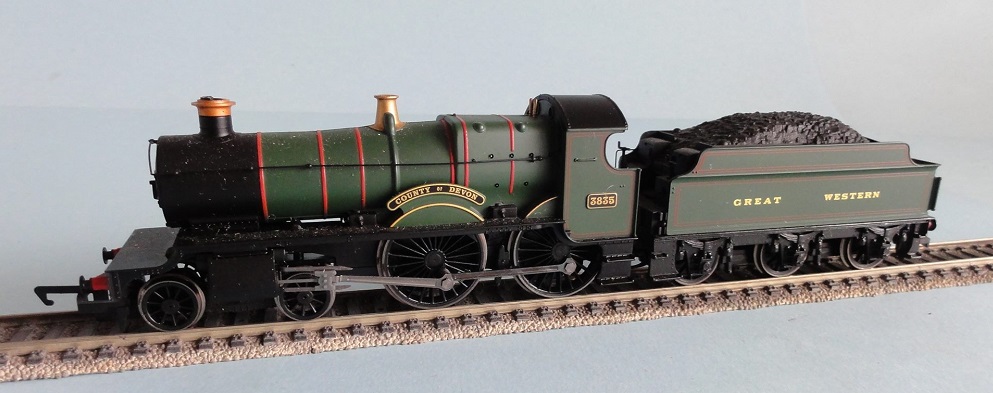
17
The GWR Diesel Railcars (known as flying bananas) were mostly passenger units with only two being used for express parcels. This one is made by Dapol.

2534
Made by Oxford Rail, this ‘Dean Goods’ loco is another pre-grouping loco being bult in the 1890’s.

9761
Made by Bachmann, this pannier tank has been renumbered by a previous owner – it should be 64xx.

6414
Another Bachmann pannier – this time the correctly numbered 64xx class.
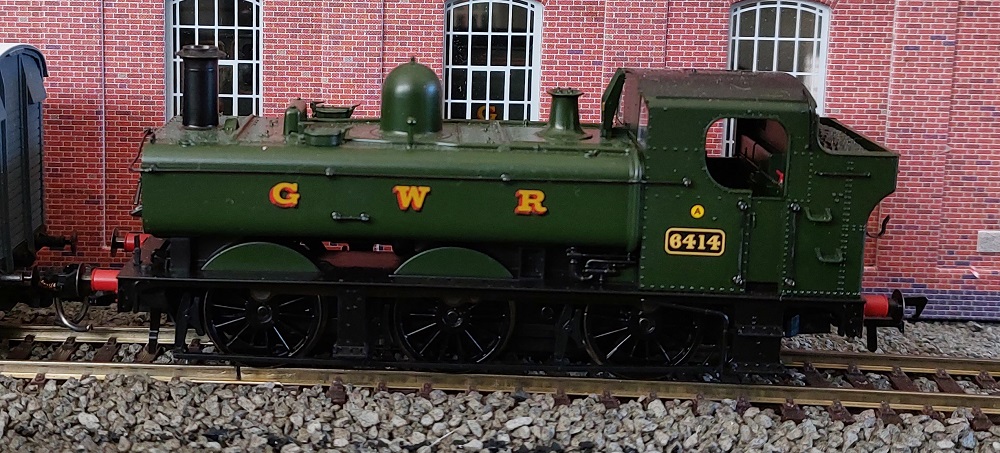
This is usually attached to one or two GWR Autotrain coaches. These have a drivers cab in the end and the loco was connected to the coach by rods which can operate the controls. This meant the train could run on single track branch lines and did not need to have the loco disconnect from the coaches and run round them and connect on the other end before the return journey.
1366
This Heljan made pannier is the lead member of the 1366 class which had outside cylinders unlike the majority of the GWR panniers.
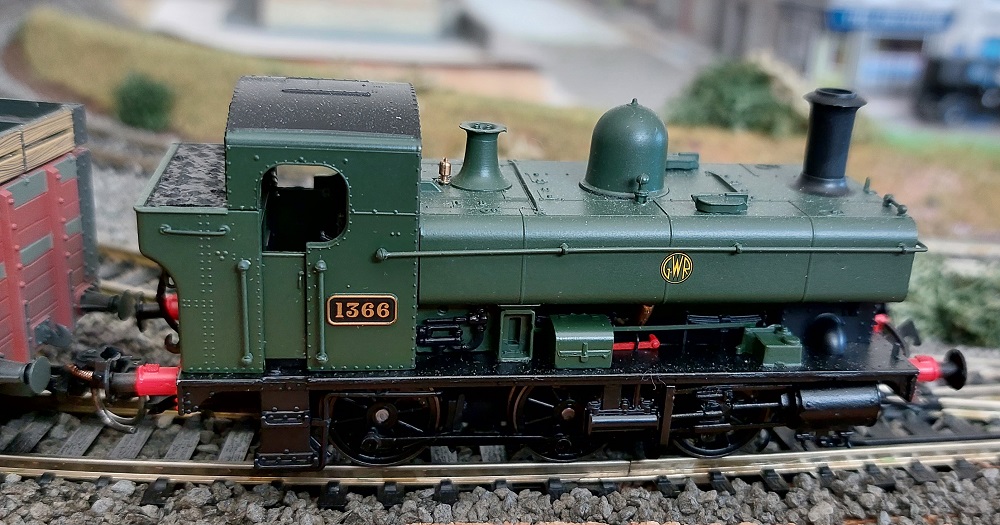
6006
A King class loco found running fast passenger trains on the main line – will normally have the Night Mail carriage at the end of the train.

3046
A Hornby pre-grouping 4-2-2 of the ‘Achilles’ class built in 1895.
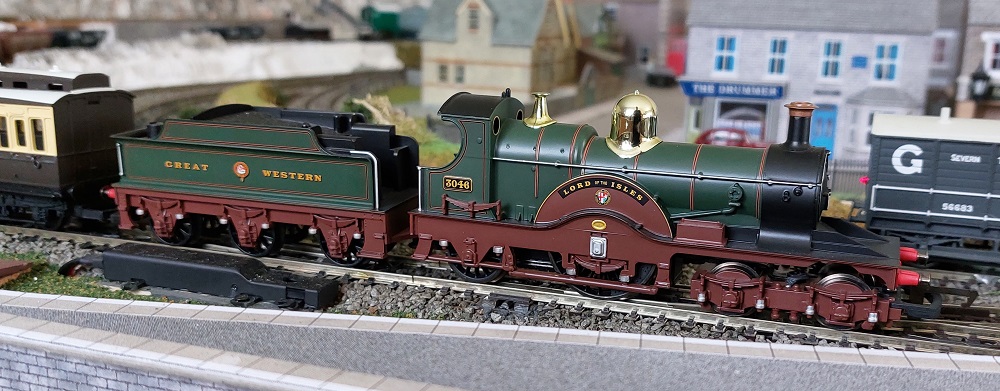
9303
Soon to be renumbered to represent the loco John and Peter started working on once 5164 was back in steam. Due to being an old Bachmann loco with a split chassis design it is unlikely that this will run on Coed Bach.

7819
An Accurascale version of the 78xx ‘Manor’ class “Hinton Manor”.
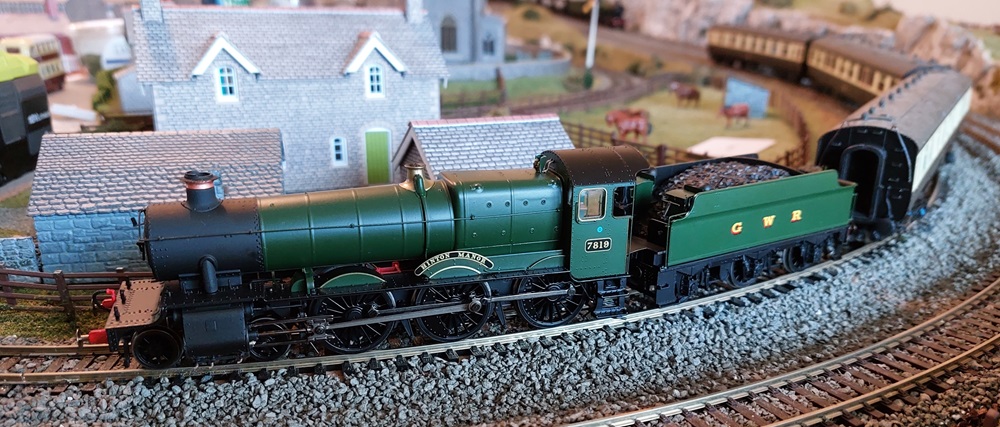
4074
A limited edition Hornby model to celebrate 100 years of the railway grouping. This was the 1923 formation of the ‘Big Four’ railway companies, the Great Western, London Midland and Scottish, London and North Eastern and Southern, from all the smaller private railway companies. Of the four, only the Great Western absorbed a number of smaller railways under its banner, the other three were new companies. These four companies continued till 1948 when they were all merged into British Railways.
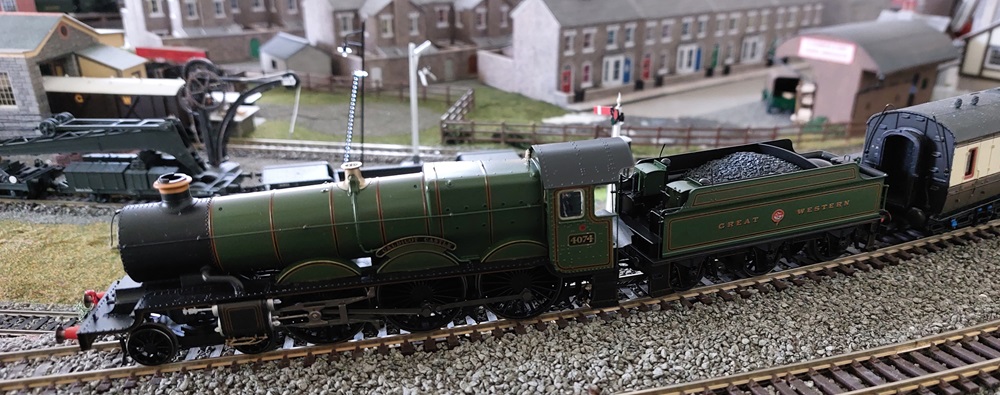
4970
A Bachmann 49xx Hall class loco “Sketty Hall”
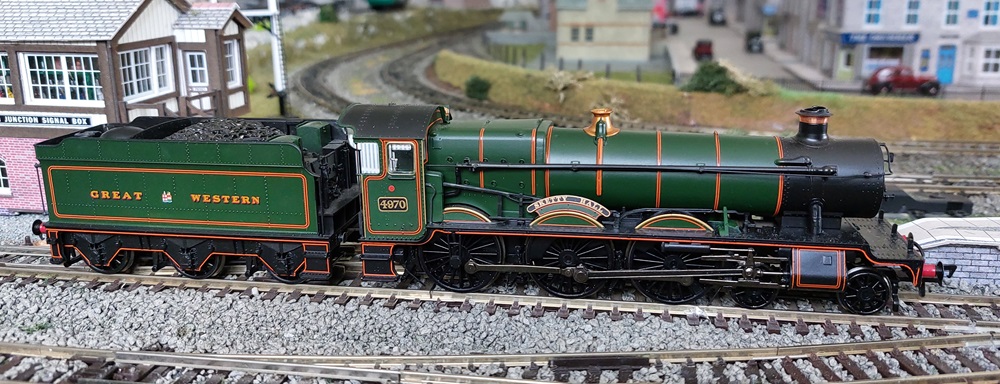
5637
Bachmann 56xx Class 0-6-2- tank designed for freight duty in the South Wales area.
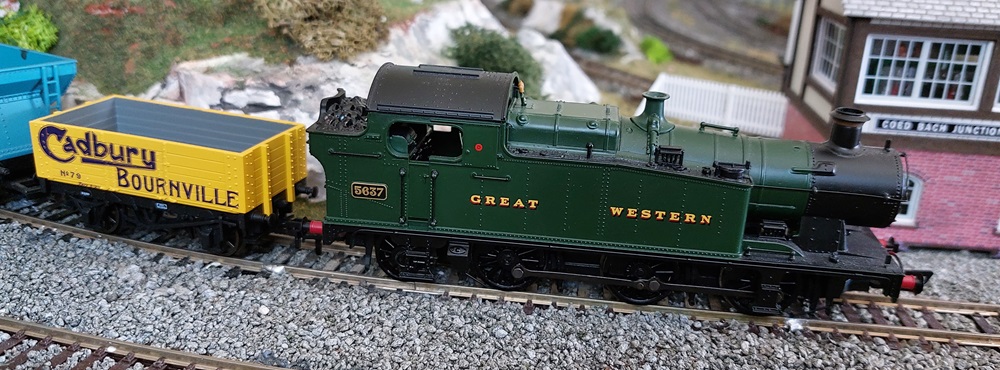
Autotrain
The GWR tried several ways of running services over smaller branch lines without having the problems of having to swap the loco round to the front of the train at the end of the line. The first of these was the Autocoach, an 0-4-0 loc built into a carriage with a driving compartment at each end. Kernow Models have produced this unusual loco in different livieries including this GWR Maroon livery.

Rolling Stock
Carriages
For the older locos such as 3835 (and 2534) there is a rake of up to 5 clerestory coaches. The newer coaches are mostly corridor composite (1st and 3rd class), corridor 3rd or brake 3rd.


The GWR Autocoaches are currently represented by the Dapol version being pulled / pushed by 6414.
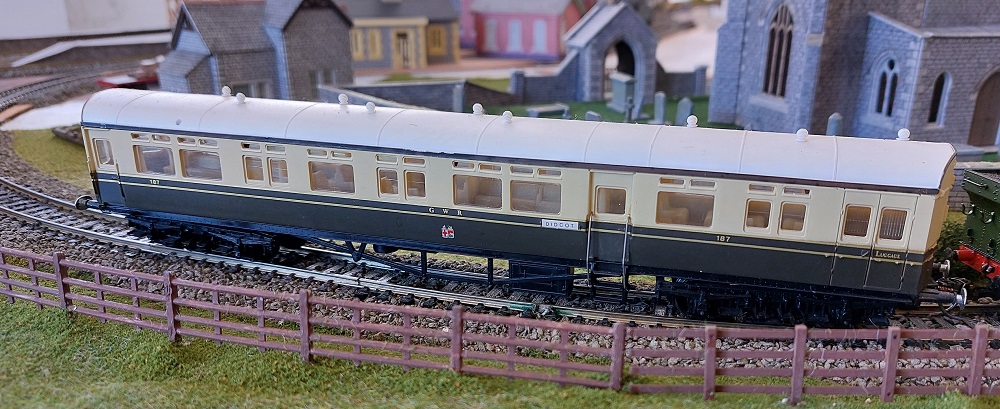
Wagons
With it being a mining town, there are a large number of open plank wagons, either owned by the GWR or privately. Specialist wagons such as the Siphon H, Siphon G, Crocodile, Macaw, GPV and Mink wagons all have GWR livery.
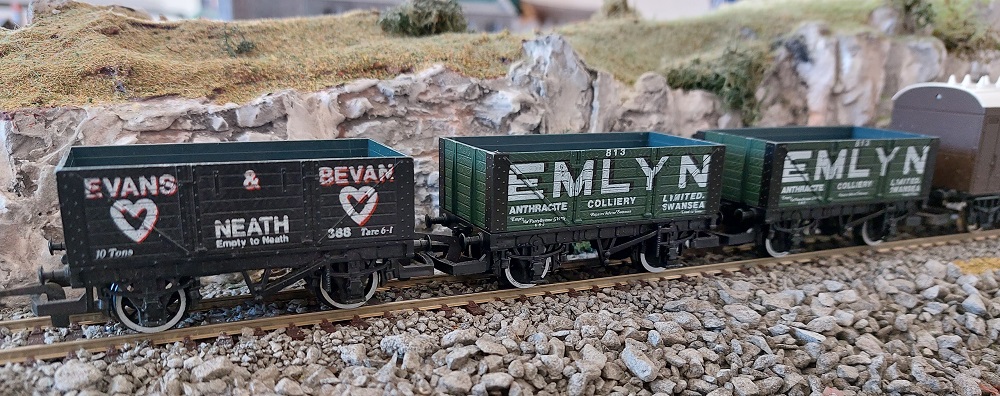

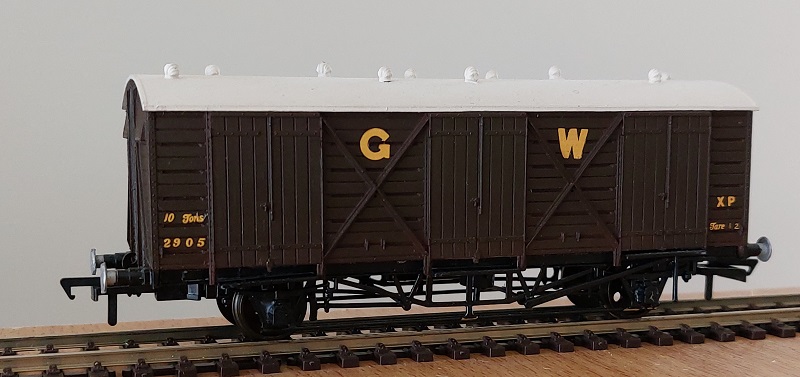
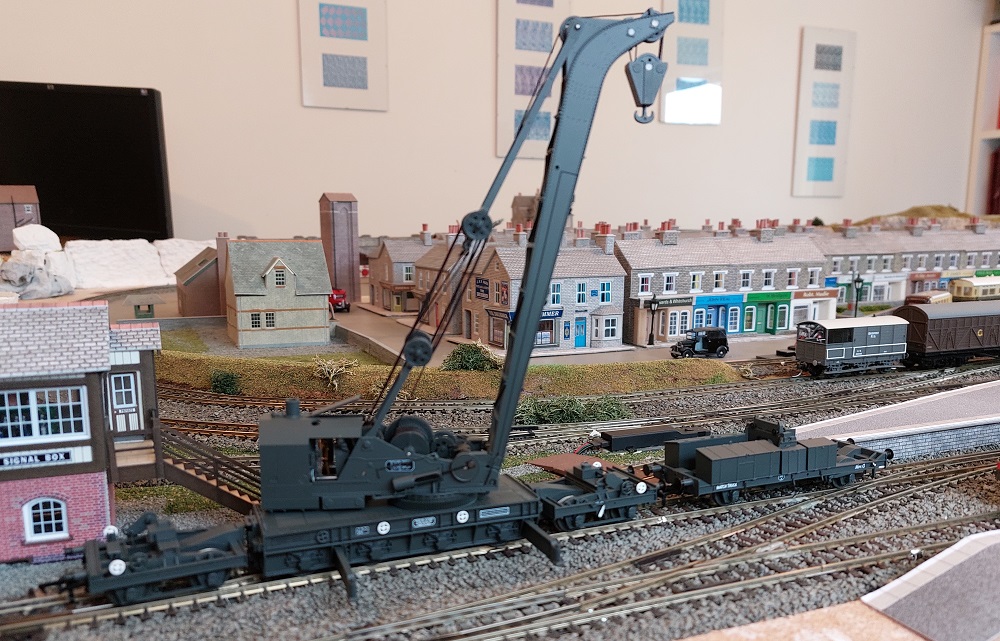
There are a few wagons which have family connections. A number of Peter’s family worked at Cadbury’s in Bournville and with their work on the SVR, the Highly Mining Company is also represented.
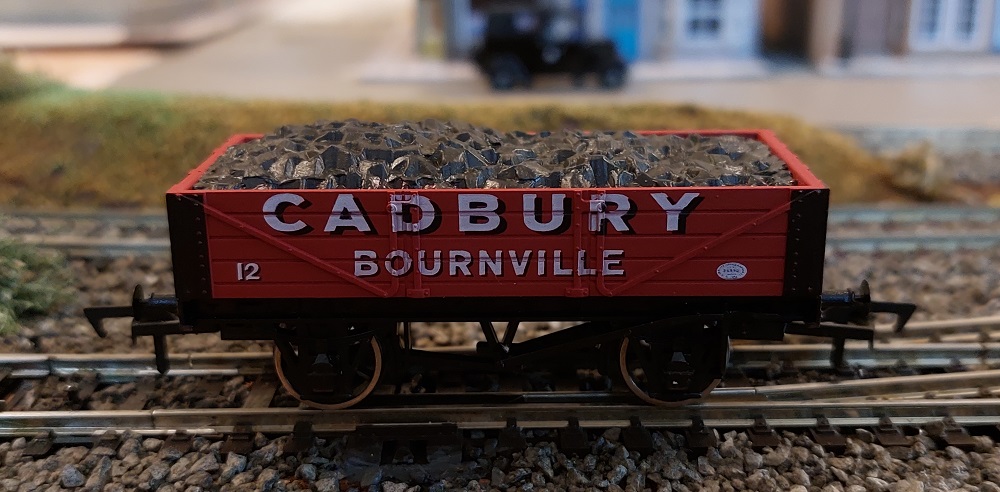
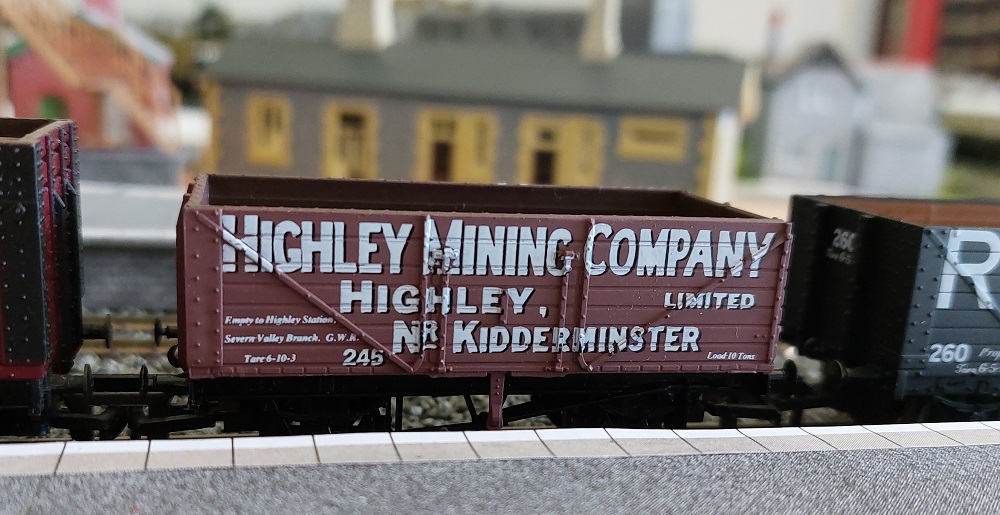
The Buildings
To match the age and location, most of the buildings are of grey stone. Four rows of terraced houses provide most of the housing but there are a few isolated houses for the blacksmith, vicar and stationmaster. Commercial premises are mostly terraced units and the shop owners reflect members of our family trees in their occupations. There are a few exceptions such as the pub run by Peter’s brother with beer provided by his nephew. Most of the buildings are by Metcalfe but there are a few Superquick and one Scalescenes. The customization for the pub and the station nameboards are by SankeyScenics.
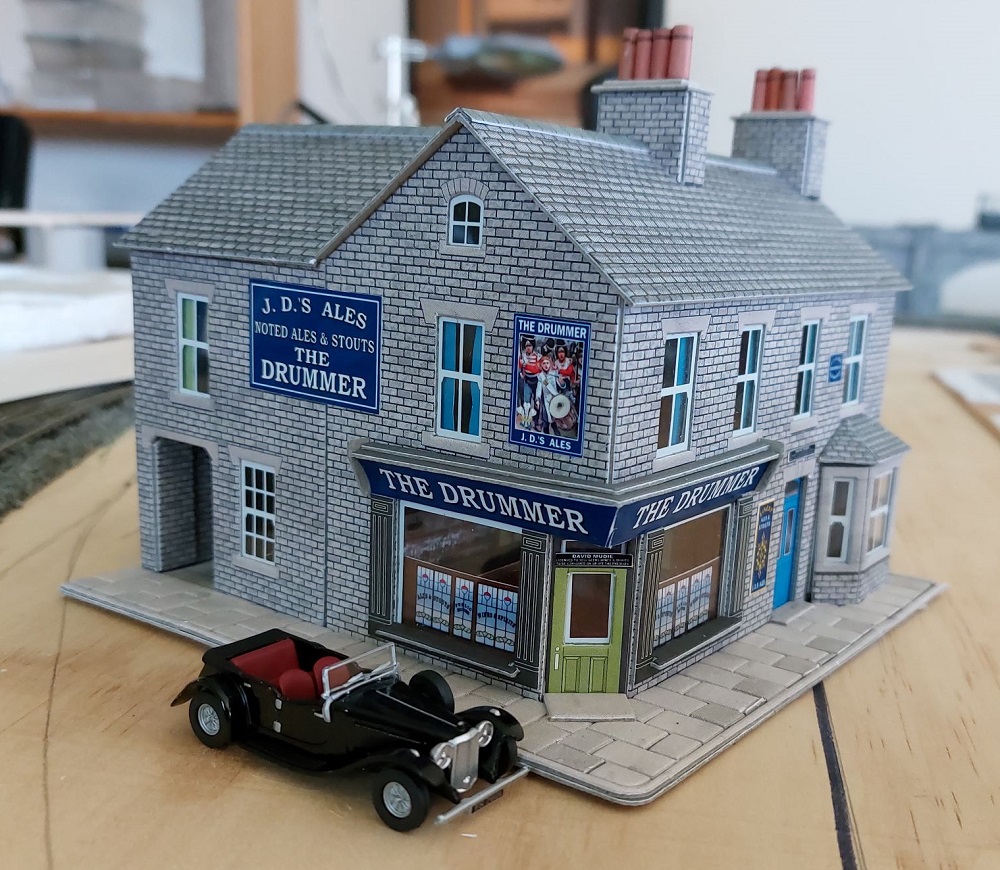
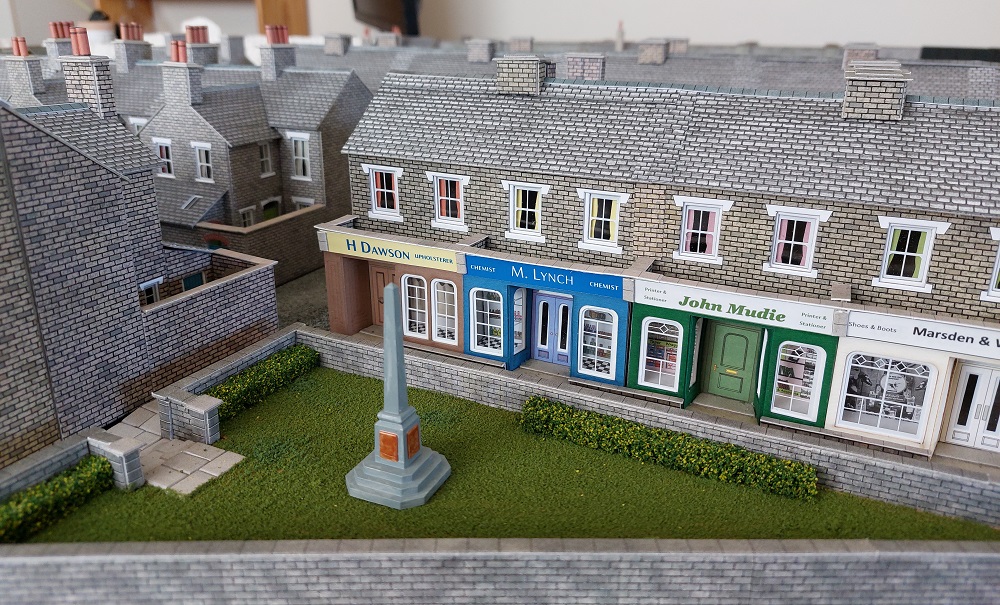
Included in the buildings are a school, police station, fire station, forge, church, timberyard, a garage and two signalboxes. Shops include a bootmaker, upholsterer, confectioner, baker, greengrocers, bookseller, chemist, tobacconist, dressmakers and a cabinet maker.
The Technical Stuff
The railway is controlled by a Digitrax DCS210+ DCC controller with 4 UP5 access points around the baseboard to allow Peter to control the locos from anywhere around the layout. Track is mostly Peco with some Hornby curves. Points are all motorised with DCC controllers provided by Gaugemaster or Rails of Sheffield.